Trapped by Raging Wildfires in December, Kansas Ranchers Share Staggering Story of Survival
Grit With Grace USFR 02/05/22.
The serene setting in western Kansas is one that serves as an escape from the hustle of city life. Desolate with more prairie than people, Paradise, Kan., provides the perfect destination for raising cattle. And it’s where Ken Stielow’s family, owner of Bar S Ranch, has called home since the late 1800s.
“This quarter right behind me was homesteaded in 1900 by my granddad,” says Stielow. “My great-granddad homesteaded a mile west in the late 1880s."
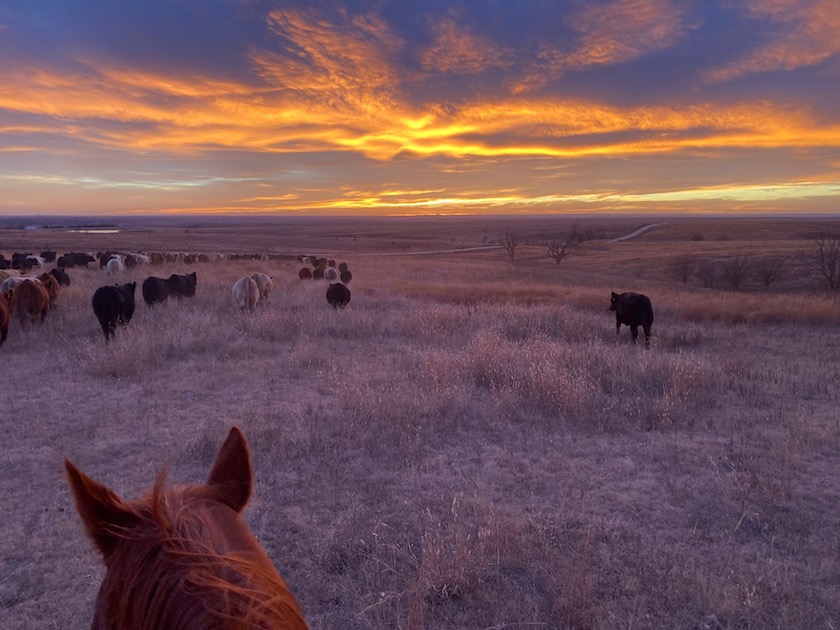
At night, the skies can be painted with picture-perfect sunsets, at times allowing you to forget about the challenges that come with life. And those challenges are prevalent, as ranching in Paradise isn’t for the faint of heart.
“We'll have some little prairie fires that start, and you get them put out in maybe a mile. But nothing of this magnitude. I've never been anything like it,” says Stielow.
Stielow’s family witnessed destruction for miles upon miles in December. Wildfires that were fueled by uncontrollable winds made Paradise look far from a dream destination.
“It looks like a desert or moonscape now, as somebody described it,” he says. “It's kind of hard look at, really.”
What can be lush landscape with the right conditions is now charred and scarred, after a wildfire raged across the fields just seven weeks ago.
“It was December 15. It was a Wednesday,” recalls Stephanie Dickerson, Ken’s daughter. “The night before, there had been a whole bunch of schools canceled, and we knew that there was going to be wind."
Stephanie, along with her husband, David, live and ranch on the family homestead. Winds come with the territory in western Kansas, so wind warnings aren’t unusual. However, on December 15, she says the wind was of a different magnitude.
“It wasn't tornado weather. It wasn't hail weather. It was just, you could just sense that there was something different,” she explains.
Despite wind warnings, even those were not enough to prepare area residents for what was about to hit. What they believe were downed power lines sparked a fire that changed their lives.
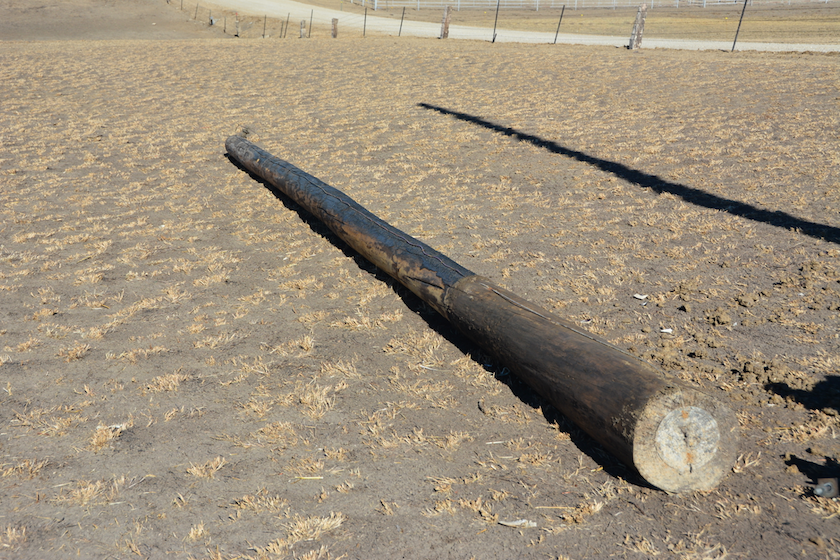
“About 2:30 in the afternoon, our neighbors to the north and west of us, Craig and Joleen Lawson, called us. They said, ‘Hey, there's a fire.’ And they said, ‘It is headed towards our house. Could you guys bring a couple of trucks and trailers over and help us evacuate our horses?’”
With that, the Dickersons took off, not knowing exactly where the fire was or how fast it was moving. David and their son in one truck and trailer. Stephanie and their son's college roommate were in another truck following closely behind.
“Literally, you could only maybe see 20 to 30 yards ahead of you. It was just blowing that bad, and the dust and everything was terrible,” Stephanie says. “We got over to their house, pull into their driveway, and Craig meets us there. He's like, ‘The fire is already here.’”
Raging Wildfires
Seeing the fire on the horizon, the Dickersons jumped back in their trucks to head back to their ranch when one truck and trailer flipped over from the high winds with David and their son inside.
“The truck that I was driving did not blow over,” Stephanie says. “So at that point, they ran back and jumped in with me. And we couldn't necessarily see the flames. But we can felt the heat, so you knew that it was close.”
Knowing they had to escape the path of the fire, they drove back north. But they didn’t get even 100 yards north, and the fire was already crossing the highway. So, they turned around.
“Craig called and said, ‘Hey, Joleen is still in the house,'” says Stephanie. "He said, ‘You guys go and grab her.’”
So they did, but when they got there, barns and other parts of the farm were up in flames.
“David and I go into the house, we grab Joleen, and of course she's frantic. She's trying to put stuff in a bag, and we grab her and tell her we have to go,” says Stephanie.
What they didn’t know at the time, is the wildfires were so furious, they tore through a 25-mile path in about 18 minutes.
“It was blowing so hard, the fire would have been jumping half a mile to a mile at a time,” says David.
Trapped
At that point, they were trapped.
“We go to leave, and the fire trucks meet us at the end of their driveway, and we said we were going to go west. They said, ‘You can't go west, there's another fire coming over the top of this fire.’"
The Dickersons then followed the tanker truck and two rural fire trucks into a green, winter wheat field that the firefighters knew would provide the least amount of fuel for the fire.
“And this is all volunteer firemen at this point,” Stephanie says. “It is our local neighbor, people that we have known our entire lives.”
A Plan to Survive
And with that, those volunteer firefighters came up with a plan to try to survive.
“They told us, ‘We’re going to sit here, and we're going to wait it out. And the tankers are going to pour water over the top of us when the fire gets close,’” Stephanie recalls.
She says with a limited amount of water left in the tank, they didn’t turn the water on until the fire was closing in.
“We're sitting in the middle of the wheat field. And when the fire came over, [my son] Grady’s best friend, Tyler, was on the back of the fire truck,” says Stephanie, as she cries remembering how it all transpired that day. “He was the one that was outside and sprayed all the trucks with water.”
Video Stephanie captured on her phone shows just how close they were to not surviving that day. A thin ring of brown and green around the trucks is the only thing that wasn’t black in the entire field.
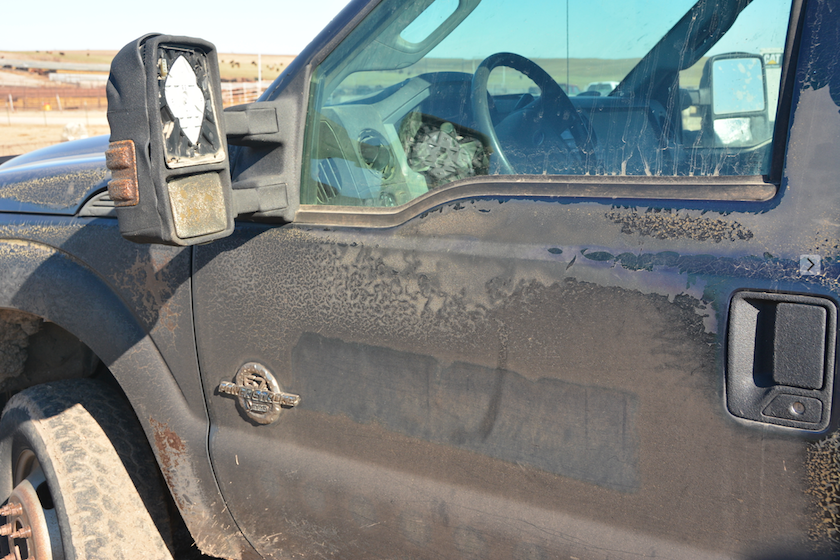

House on Fire
Thankful to be alive, the Dickersons didn’t know if their own ranch and livestock were caught in the flames. So, after the flames passed they headed toward home.
“We got about a mile and a half, two miles from our house and I could see that the house was on fire. Our show barn was on fire. Everything at our house was on fire,” she says.
“There were nine structures there, and I think there's two left,” says David.
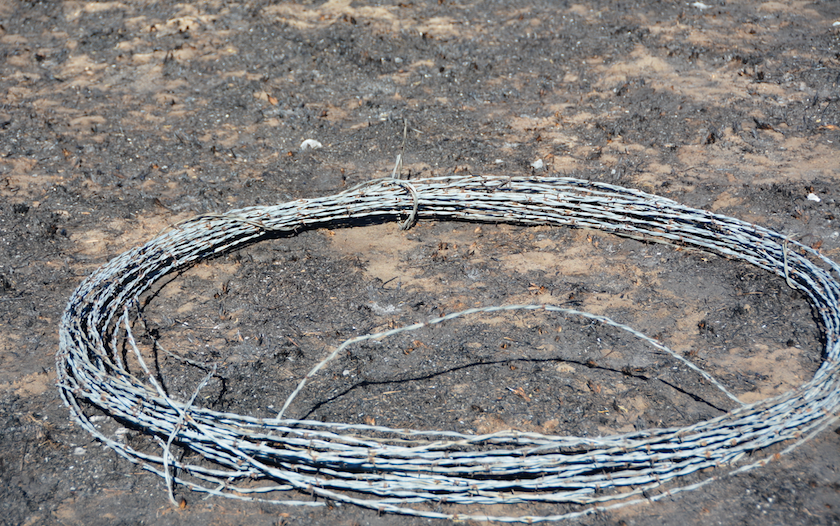
They lost nearly all their personal belongings, except the clothes on their backs. And their family lost livestock, other structures on the ranch and 40-miles worth of fence. And 200 head of cattle, all gone.
“We had one group of cattle that we had brought into a pasture, a winter pasture with a lot of grass, and that had cows with embryo calves on it. And we were to put embryos in the next morning, we had an appointment. And I think there were about 50 pairs in that pasture, and none of them survived,” says Stielow.
After the Flames
But what happened hours after Bar S Ranch was devastated by the fires is where this story gets better.
“Well, in the next three days, we shipped most of our cows to other locations,” says Stielow. “You really don't know what kind of friends you have until something like this happens."

Six hundred head of cattle that survived were immediately taken in by friends up to 450 miles away.
“We've had physical donations from Texas, Oklahoma, Arkansas, Colorado, Nebraska, Missouri, Kentucky, Iowa, the Dakotas and Colorado,” says Stephanie. “Not to mention monetary donations that I bet we've gotten from almost all 50 states. It's pretty overwhelming.”
“It's probably, as much as anything, letting you know that there's still really good people left in the world,” says David.
Overcome with gratitude, the Stielows and Dickersons saw relief come from people they know personally, while other donations poured in from people they’ve never met.
“You see behind me the pile of hay? There was just a constant stream of hay trucks bringing hay people had donated. It was kind of overwhelming. It really was,” says Stielow, taken back by the generosity.
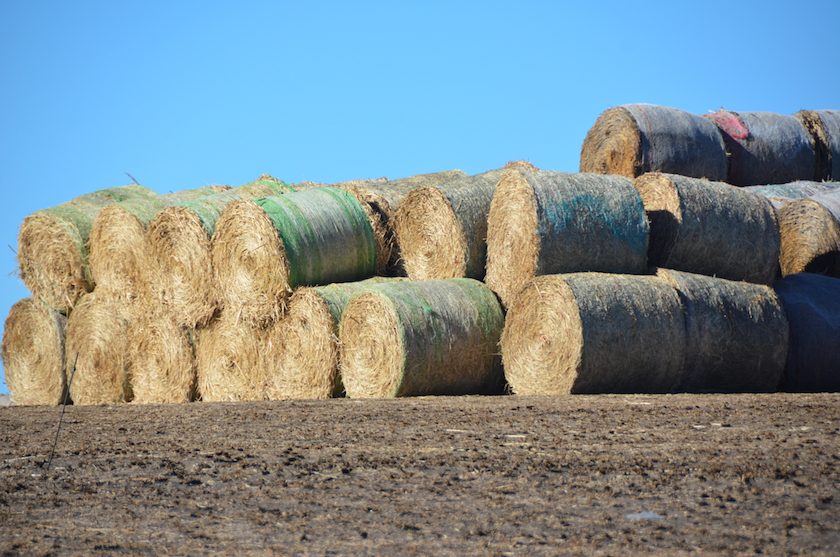
A convoy of hay was trucked in from hundreds of miles away to help area ranchers who lost pastures and their own hay.
“I had a friend tell me this last weekend that we were so lucky, because the people that all showed up and people have sent donations. She said a lot of people don't see how much you affect other people's lives until your funeral. And they said, basically, you got to attend your funeral. But you're still alive to tell about it. And for that, I will forever be grateful."
While it’ll be at least three years before their ranch gets back to full capacity, this family is thankful that from the ashes rose relief that will continue to restore hope.
Here's How You Can Help
As the Kanas Livestock Association continues to work to deploy resources, as LMA says there are four collection and distribution points for supply donations of hay, stockwater tanks, fencing supplies and more. Those designated collection points include:
Rooks County
Heartland Regional Stockyards
907 NW 3rd St, Plainville, KS
785-688-4080
Russell County
Russell Livestock
720 S. Fossil, Russell, KS
785-483-1455
Russell County Fairgrounds
702 Fairway Dr. Russell
Marcia Geir: 785-483-3157
Lane County
3 E Rd 120, Dighton, KS
Erik Steffens: 620-397-1687
Related Stories:
Nothing Left: Kansas Ranchers Lose Houses, Barns and Livestock in Uncontrollable Wildfires







